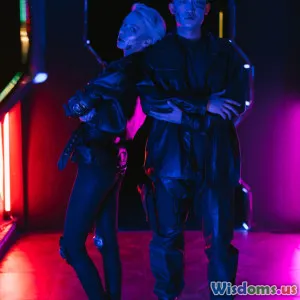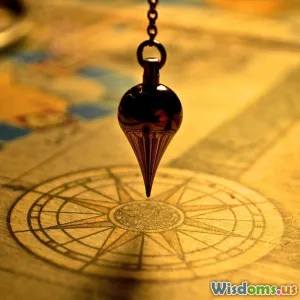
Why Dystopian Novels Resonate with Teens More Than Ever in 2024
7 min read Exploring why dystopian novels deeply resonate with teens in 2024 amid global uncertainties and social dynamics. (0 Reviews)
Why Dystopian Novels Resonate with Teens More Than Ever in 2024
Dystopian novels have long held a special place in the landscape of young adult literature, but in 2024, their popularity among teens is reaching new heights. What is it about shadowy futures and oppressive societies that speaks so profoundly to this generation? As global uncertainty and cultural shifts accelerate, dystopian narratives do more than entertain—they act as mirrors reflecting youthful anxiety, hope, and defiance.
The Pulse of a Turbulent Era: Dystopia as Reflection
Today's teens are growing up amid multifaceted crises — climate change, political polarization, economic instability, and rapid technological transformation. The World Economic Forum's 2023 Global Risks Report highlights these anxieties, naming environmental degradation and social upheaval as paramount concerns for young people worldwide. Dystopian novels resonate because they capture these real-world stakes in vivid fiction.
Consider a popular recent example, Suzanne Collins’ The Ballad of Songbirds and Snakes (2020), a prequel to The Hunger Games. Set in a despotic society smothered with surveillance and disparity, it parallels modern fears about authoritarianism and inequality. Teens read such stories not just for escapism but to see their apprehensions given form—and, critically, to witness characters who challenge and navigate these fears.
Why Teens Gravitate Towards Dystopian Themes
Exploration of Identity in Conflicted Worlds
Adolescence is a period rife with self-discovery, and dystopian books offer teens a sandbox to explore notions of identity and morality. In oppressive regimes, protagonists often must define who they are in opposition to prevailing norms, a metaphor for teens’ own search for individuality within societal expectations.
For example, in Veronica Roth's Divergent series, the idea of factions symbolizes the struggle to fit in versus resisting categorization, a dilemma many teens intimately understand.
A Framework for Critical Thinking and Activism
Dystopian narratives compel readers to question power, authority, and morality. This genre often highlights the consequences of apathy and the importance of activism—attributes that empower young readers.
Teens today are among the most politically and socially engaged in recent decades, inspired by movements like Fridays for Future and Black Lives Matter. Books like The Hate U Give by Angie Thomas, though more contemporary realistic fiction, carries dystopian resonances by confronting systemic injustice; the crossover popularity demonstrates this link between literature and youthful activism.
Emotional Catharsis and Hope
Beneath bleak settings, dystopian stories often radiate hope through resilience and solidarity. This emotional journey offers teens a cathartic release—amid fear and uncertainty, there’s the promise of change. As author Margaret Atwood notes, “Dystopias hold up a mirror—not to glorify the anxious hopes of society but to warn and inform.” Teens pick up these novels hoping to find a narrative that validates their fears but also inspires courage.
Contemporary Trends Amplifying the Genre’s Popularity
Integration with Multimedia Platforms
With TikTok BookTok communities driving literary trends, dystopian novels maintain vibrant discussions around plot twists, character arcs, and societal parallels. For instance, ALS (After Lockdown Stories) on TikTok features teen readers dissecting modern dystopian themes connected to pandemic anxieties.
Intersectionality and Diversity
Recent works increasingly feature diverse characters and voices, making dystopian appeals resonate across cultural and social demographics more effectively. Authors like Tomi Adeyemi with their Legacy of Orïsha series, weave dystopian elements with rich African mythology and socio-political themes relevant to marginalized groups, broadening the genre's appeal.
Hybrid Genres and Innovative Storytelling
2024 sees a surge in dystopian crossovers—melding science fiction, fantasy, and thriller elements to create hybrid narratives that captivate sophisticated young readers. Books like Gilded by Marissa Meyer fuse fairy tale retellings with dystopian undertones, creating multi-layered experiences.
Real-world Impact: Beyond Fiction
The influence of dystopian stories extends beyond book pages. They're crucial tools for educators and librarians to spark dialogue on civic engagement, ethics, and resilience among youth. Programs incorporating dystopian literature—in classrooms or summer reading—foster critical literacy and global awareness.
Studies, such as one published in the Journal of Adolescent & Adult Literacy, emphasize that dystopian novels can bolster empathy and emphasize the importance of personal agency, pivotal traits for responsible citizenship.
Conclusion: Why This Matters Today
In 2024, dystopian novels do more than entertain—they offer teens a lens through which to understand and channel the complexities of the world they inherit. The genre's appeal lies in its potent fusion of real-world anxieties with hopeful narratives of resistance and empowerment.
For parents, educators, and policymakers, recognizing why teens gravitate toward dystopia provides opportunities to engage them in meaningful dialogues about society and their roles within it.
Ultimately, dystopian tales are not just stories of dystopia—they're stories of resilience, awakening, and the unwavering quest for a better future. For a generation seeking clarity amid chaos, that makes all the difference.
Author’s note: Research data cited herein, including insights from the World Economic Forum and contemporary young adult literature trends, reflect the dynamic, interconnected forces steering teen engagement with dystopian fiction as of early 2024.
Rate the Post
User Reviews
Popular Posts





















